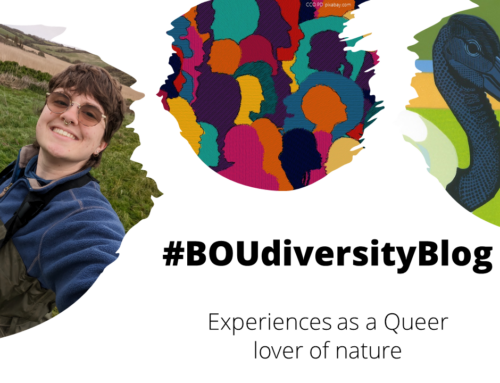 Studying and comprehending the world that we inhabit, as well as designing actions for attending to its problems, are highly complex tasks. To fulfill them, it is necessary to employ enormous creativity, use tools from multiple origins and, especially, learn to collaborate. It is frequently conceived that such huge challenges are under the exclusive responsibility of science, but, is this really true? Does science face these tasks alone?
Studying and comprehending the world that we inhabit, as well as designing actions for attending to its problems, are highly complex tasks. To fulfill them, it is necessary to employ enormous creativity, use tools from multiple origins and, especially, learn to collaborate. It is frequently conceived that such huge challenges are under the exclusive responsibility of science, but, is this really true? Does science face these tasks alone?
Traditional knowledge emerges as a powerful ally of western science for comprehending nature. Both types of knowledge posses their own virtues and limitations, and even if their mutual conversation seems complicated, there is a recent collaborative approach that demonstrates the feasibility and effectiveness of its convergence: community-based participatory research (CBPR). In fact, this approach has already benefited ornithology from multiple scopes, including conservation, management, monitoring, ecology, biogeography, and bird natural history.
CBPR is one of the multiple faces of a science, including ornithology, that seeks to reinvent itself in a fairer, more equitable, and pragmatic way, discovering rural and indigenous communities as their main collaborators. CBPR aims to go beyond data gathering, which is a particular feature of other types of participatory research, such as citizen science; it considers the need for coming to an understanding when establishing shared goals and objectives, as well as including the active participation of the involved actors during the distinct stages of the knowledge generation process. Also, CBPR searches for the immediate applicability of results, nurtures through continuous communication, and seeks to attend to the needs of all participants.
Challenges for securing this type of collaboration, that seeks to generate and apply knowledge, are huge and diverse. Still, I would like to delve into a key factor that limits the performance and success of CBPR within ornithology and other disciplines: the forced migration of those community members who are engaged with the projects.
Why is it important to highlight forced migration as a limitation for CBPR? The forced migration of people currently occurs in a large portion of the world, and it is particularly intense in those regions where a lush biodiversity coincides, in a contradictory and painful way, with local human populations that live in precarious situations and possess uncertain life opportunities. If we conceive migration just as the physical departure of a person from its community, we could be at risk of being dangerously simplistic. Among other things, migration might represent a rupture in the continuity of the community’s way of life, undermining family bonds, organizational systems, and productive activities. Migration implies the interruption of the generation, development, transmission, and use of traditional knowledge, which are fundamental processes for enhancing the life quality of the whole community.
If that was not enough, the migration of community members is also costly in biodiversity terms. Their departure entails losing those champions who defend the last wildlife reservoirs, as well as the abandonment of sustainable management practices within working landscapes, the deprivation of territories, the dissemination of activities that destroy ecosystems, and the flight of traditional knowledge that is necessary to comprehend, use, and preserve local biocultural heritage. In sum, forced migration, which is usually initiated with the intention of fostering better life conditions, ends as a contradiction of itself; a complete tragedy.
What are the implications of forced migration within a CBPR context? The projects that merge the collaboration between science and communities usually need a considerable investment of time, constant dedication, timely follow-up, steady funding, and a lot of effort from all participants to achieve long-standing, thriving, and fruitful projects. In fact, several years are usually needed for creating the necessary local capacities for developing CBPR projects, as well as for building trust and communication bonds, which are vital for understanding and mutual learning between scientists and community collaborators. Still, an unfortunate sudden event, the worsening of a previous need, or a delay in funding, might prompt community actors to migrate. As a result, the constructed collaboration processes, the generated knowledge, and the collective hard work fall apart.
The departure of collaborators produces helplessness and generates a feeling of losing the hope that was invested in the joint work, tearing apart the dreams for a better future. The uncertainty of their return is usually large and heartbreaking. After the development of the projects, we might not refer to community members as collaborators, but as guides, friends, teachers, colleagues, and even family; all of who are now wandering through a high-risk path called migration. Furthermore, if we acknowledge that community members are the guardians of those last sources relevant for their biodiversity, which we love and care about so much, why not weep even more at their need to leave?
Is there any cure for forced migration? I do not pretend to solve such a social, economical, political, historical, and ethically-intricate situation with a simple response. However, under a CBPR approach, some strategies to confront forced migration might include opening science to collaboration with communities; increasing proper and long-term funding for these kind of projects; co-developing locally-contextualized projects; involving communities in all research stages; considering local views and needs; promoting the benefits of programs within and outside communities; and enhancing governance, autonomy, and the empowerment of communities.
Also, there is a need to preserve traditional knowledge, not as a museums’ relic, but through its strengthening, growth, spread, and application. It is vital to appreciate, respect, and integrate it. Let’s foster the continuation of traditional knowledge, avoiding its migration and promoting its prosperity where it is hugely needed: in its place of origin. During all these processes, ornithologists and other scientists might participate as companions, collaborators, and allies, given that we share with communities a joint task: the generation of knowledge for understanding ourselves in this world and for coexisting with all the living beings that surround us, including birds.
For those who once departed, for those whom we expect back…
If you are interested in contributing to the #BOUdiversityBlog, please get in touch with us via this form which ensures anonymity for those who seek it.
Image credit: CCO PD pixabay.com




